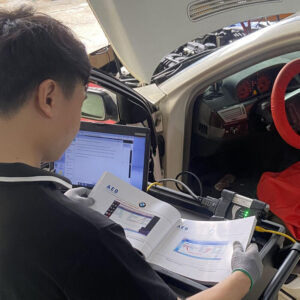
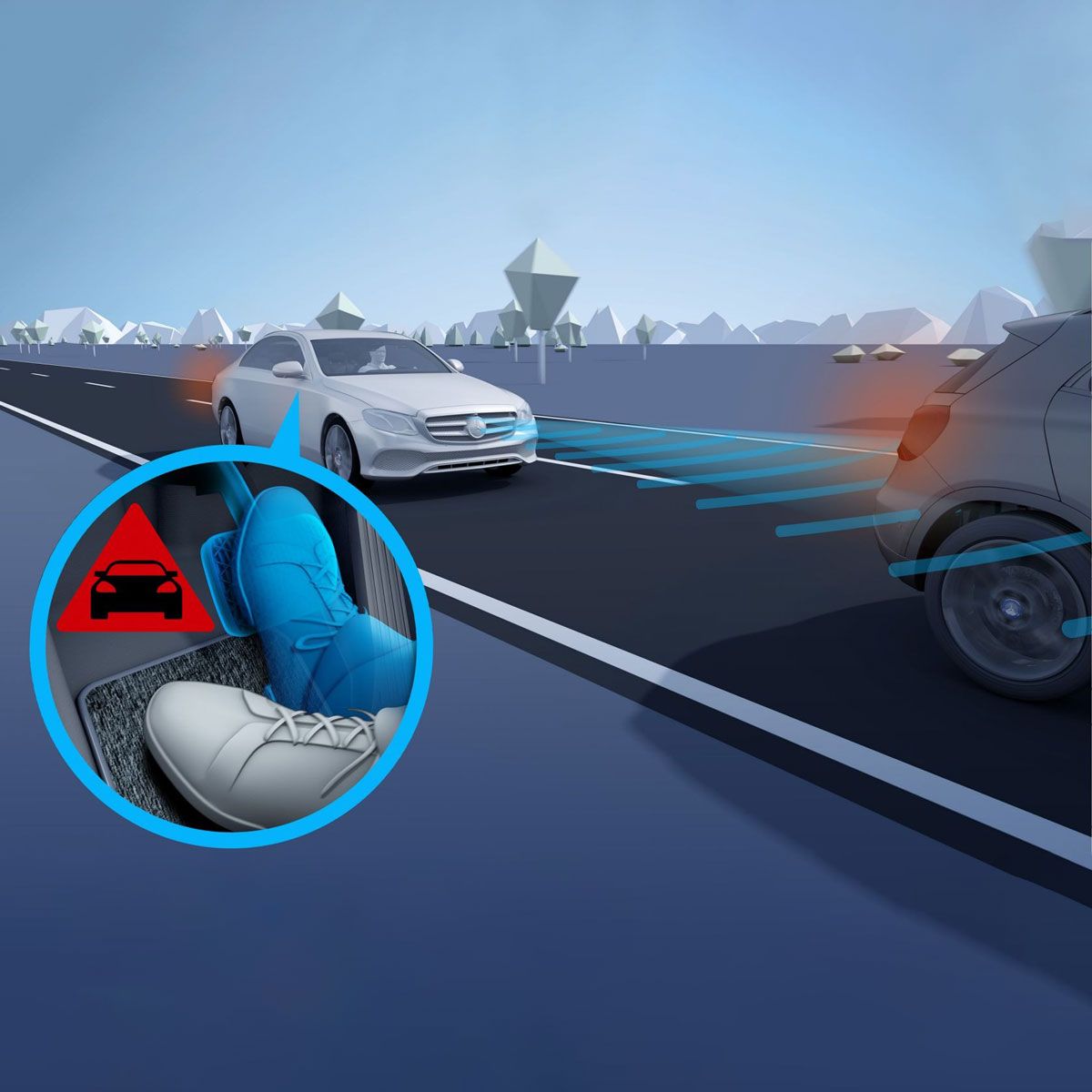
What Is Active Brake Assist? You’ll Be Glad Your Car Has It—Here’s Why
Contents
- 1. What Is Active Brake Assist?
- 1.1. Vehicles Equipped With Active Brake Assist
- 1.2. Benefits of the Active Brake Assist
- 2. What Does Active Brake Assist Do?
- 3. Components of The Brake Assist System
- 3.1. Front Radar Sensor (Long-Range Sensor)
- 3.2. Front Camera (Mono or Stereo Camera)
- 3.3. ADAS Control Unit / Brake Assist ECU
- 3.4. Electronic Brake Booster or Brake Actuator
- 3.5. ABS and ESP (Electronic Stability Program) Modules
- 3.6. Vehicle Speed and Yaw Sensors
- 3.7. Power Supply System (Battery, Alternator, Fuses)
- 3.8. Driver Interface Components
- 4. How the Active Brake Assist System Works
- 4.1. Real-World Case Example: Urban Street Save
- 5. Common Issues With Active Brake Assist
- 5.1. Radar Sensor Obstruction or Misalignment
- 5.2. Camera Obstruction or Windshield Issues
- 5.3. Low Voltage or Weak Battery
- 5.4. Faulty Brake Pressure Sensor or Brake Booster
- 5.5. Software Glitches or ECU Communication Errors
- 6. Repair Tips and Best Practices
- 7. Real-World Case Study
- Conclusion
Imagine you’re driving down the highway, and the vehicle in front suddenly slams on the brakes. Before your foot even moves toward the pedal, your car is already reacting—slowing down, preparing to stop, or even braking for you. That’s not magic. That’s Active Brake Assist, a critical safety technology designed to protect both you and others on the road.
As an automotive technician, I’ve seen firsthand how life-saving this system can be—and also how frustrating it is when it malfunctions. Whether you’re a technician, car owner, or auto enthusiast, this guide will walk you through everything you need to know about Active Brake Assist, from how it works to common failures and repair strategies.
1. What Is Active Brake Assist?
Active Brake Assist is a driver assistance feature that helps prevent or mitigate collisions by automatically applying the brakes if the system detects an imminent crash. It’s part of a broader class of Advanced Driver Assistance Systems (ADAS) and often works alongside technologies like forward collision warning, adaptive cruise control, and lane keeping assist.
While its exact name may vary between manufacturers (e.g., “Pre-Safe Brake,” “Collision Mitigation Brake System,” or “Forward Collision-Avoidance Assist”), the function remains the same: protect the driver by intervening during critical braking situations.
The core purpose of Active Brake Assist is to provide an extra layer of safety, acting faster than a human could during sudden or emergency situations. Think of it as your car’s built-in “reflex system.” Even if you’re momentarily distracted or caught off guard, the vehicle is still actively watching what’s ahead and ready to respond.
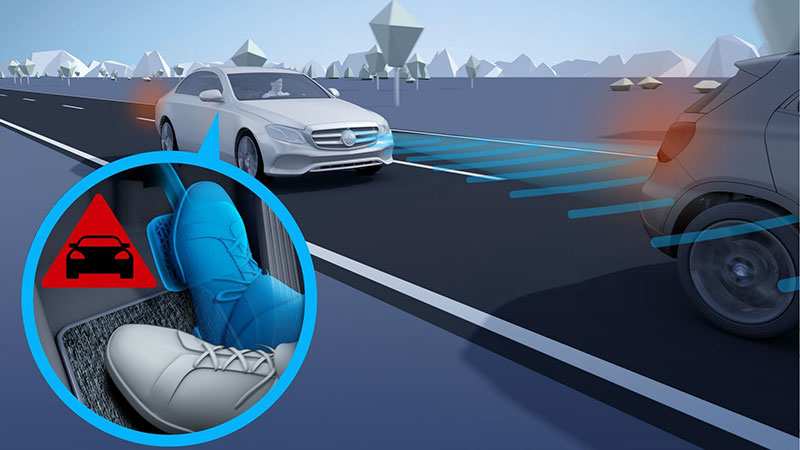
1.1. Vehicles Equipped With Active Brake Assist
Many modern cars come with Active Brake Assist as standard or optional equipment. For example:
- Mercedes-Benz (C-Class, E-Class, GLC, GLE)
- BMW (Driving Assistant, optional in many models)
- Audi (Pre Sense Front)
- Toyota (PCS – Pre-Collision System)
- Honda (Collision Mitigation Braking System)
- Ford (Pre-Collision Assist)
Even some trucks, like the Freightliner Cascadia, use advanced brake assist systems.
Active Brake Assist in Mercedes-Benz vs. Other Brands:
-
Mercedes-Benz: Among the earliest to implement Active Brake Assist with multi-stage intervention (warn, boost, brake).
-
BMW: Calls it “Active Protection” or “Driving Assistant Plus”
-
Audi: “Pre Sense Front”
-
Toyota: “PCS” (Pre-Collision System)
All systems are similar in principle but vary in sensitivity and calibration requirements.
1.2. Benefits of the Active Brake Assist
1.2.1. Prevents Accidents
Insurance Institute for Highway Safety (IIHS) research confirms that AEB systems deliver a 50% reduction in rear-end collisions, and a 56% reduction in rear-end crashes involving injuries based on U.S. police-reported data from around 2019. In fact, among vehicles with AEB:
- Rear-end crashes with injuries dropped by 56%
- Total rear-end collisions dropped by 50%
That’s not just numbers on a report—it’s thousands of accidents avoided and lives potentially saved each year.
1.2.2. Enhances Reaction Time
Human reaction time averages around 1.5 seconds. At highway speeds, that’s over 40 meters traveled before hitting the brakes. Active Brake Assist detects hazards and initiates braking in milliseconds.
Whether you’re in city traffic, cruising a highway, or navigating an unfamiliar road, the system works quietly in the background, ready to step in if you miss something.
1.2.3. Protects Vulnerable Road Users
Pedestrians and cyclists are especially vulnerable in traffic. Advanced versions of Active Brake Assist can detect and brake for them, even in low-visibility or complex situations.
1.2.4. Reduces Insurance Claims
Many insurers offer discounts for vehicles equipped with AEB or similar systems because they reduce the likelihood and severity of crashes.
Whether you’re a seasoned driver or a new one, Active Brake Assist acts like an extra layer of protection—always alert, never distracted.
2. What Does Active Brake Assist Do?
The active brake assist function works by constantly monitoring the road ahead using a combination of radar sensors, camera systems, and vehicle data inputs (like speed and brake pressure). If it detects a potential collision, the system goes through these steps:
-
Visual and Acoustic Warning
The car alerts the driver with a dashboard message and sound. -
Pre-fill Brake Pressure
It prepares the brakes for maximum effectiveness if the driver reacts. -
Partial Braking
If no action is taken, the system initiates partial braking to slow the vehicle. -
Full Braking or Brake Boost
In extreme situations, the system applies full braking force to reduce impact severity—or completely prevent a crash.
These actions can happen in fractions of a second, faster than any human response.
3. Components of The Brake Assist System
The Active Brake Assist system might seem like a simple feature from the driver’s perspective—after all, you just get a warning or the car stops automatically—but under the hood, it’s a complex network of interconnected components working in real time. Each part plays a specific role in detecting potential collisions, calculating risk, and executing corrective braking responses.
3.1. Front Radar Sensor (Long-Range Sensor)
-
Location: Typically located behind the front bumper, grille, or emblem (especially on Mercedes-Benz models).
-
Function: Continuously measures the distance and relative speed between your vehicle and objects ahead—such as other cars, trucks, or barriers.
-
Importance: This is the main sensor that enables the system to anticipate collisions at highway speeds and issue braking commands with precision.
⚠️ A misaligned, dirty, or blocked radar sensor is one of the most common causes of “Active Brake Assist Not Available” warnings.
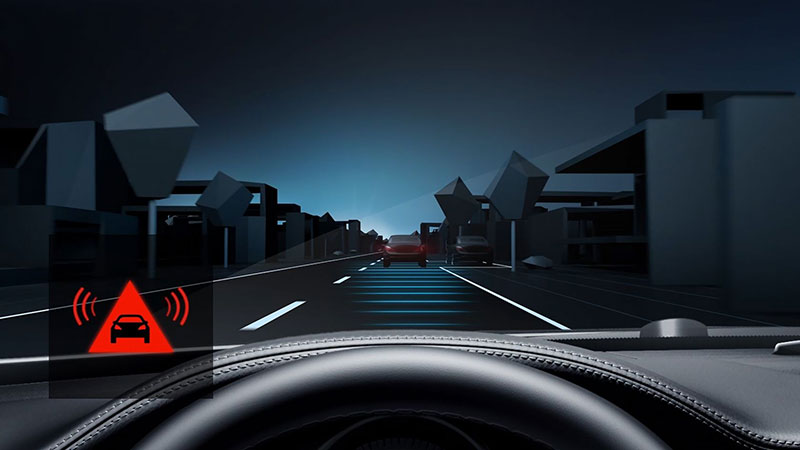
=> Click here to read the post: How to fix “Active Brake Assist Not Available” in Mercedes vehicles
3.2. Front Camera (Mono or Stereo Camera)
-
Location: Mounted behind the windshield near the rearview mirror.
-
Function: Captures real-time images of the road, lane markings, pedestrians, and other moving objects.
-
Importance: Works alongside the radar to enhance detection accuracy, especially at lower speeds and for more complex objects like people or bicycles.
⚠️ After windshield replacement or front-end repairs, this camera often requires recalibration to maintain proper functionality.

3.3. ADAS Control Unit / Brake Assist ECU
-
Location: Often housed under the dashboard or near the engine bay, depending on the vehicle model.
-
Function: Acts as the brain of the system. It processes inputs from the radar and camera, evaluates collision risks, and makes decisions about braking intervention.
-
Importance: It determines whether to issue warnings, pre-fill the brakes, or apply automatic emergency braking.
⚠️ In many modern vehicles, this ECU is shared with other ADAS features like lane assist, adaptive cruise control, or traffic sign recognition.
3.4. Electronic Brake Booster or Brake Actuator
-
Location: Integrated into the brake master cylinder or located near the firewall in the engine compartment.
-
Function: Provides power-assisted braking even without driver input. In emergency braking situations, it applies braking force autonomously.
-
Importance: Critical for executing autonomous or assisted braking actions. Without it, the system cannot physically stop the vehicle.
⚙️ In newer brake-by-wire systems, this component is even more advanced, offering faster and more precise brake pressure control.
3.5. ABS and ESP (Electronic Stability Program) Modules
-
Location: Usually mounted in the engine bay, connected to the hydraulic brake lines.
-
Function: Control wheel-specific braking during emergency stops to prevent skidding or wheel lock-up. They help maintain directional stability.
-
Importance: Work in tandem with Active Brake Assist to ensure safe deceleration, especially during sudden or high-speed braking.
🧪 These modules also share sensor data such as vehicle speed, wheel slip, and yaw rate—critical for real-time decision-making.
3.6. Vehicle Speed and Yaw Sensors
-
Location: Wheel speed sensors are mounted at each wheel hub; yaw sensors are typically located under the center console or beneath the seats.
-
Function: Provide feedback on how fast each wheel is spinning and how the vehicle is rotating (yaw rate).
-
Importance: Help determine whether the vehicle is traveling straight, cornering, or sliding, which influences braking strategy and intervention level.

3.7. Power Supply System (Battery, Alternator, Fuses)
-
Function: Provides consistent power to the electronic components of the system.
-
Importance: Voltage fluctuations, weak batteries, or poor ground connections can disrupt Active Brake Assist functionality.
⚠️ Many warning messages or system shutdowns are related to low voltage or battery problems—not necessarily sensor faults.
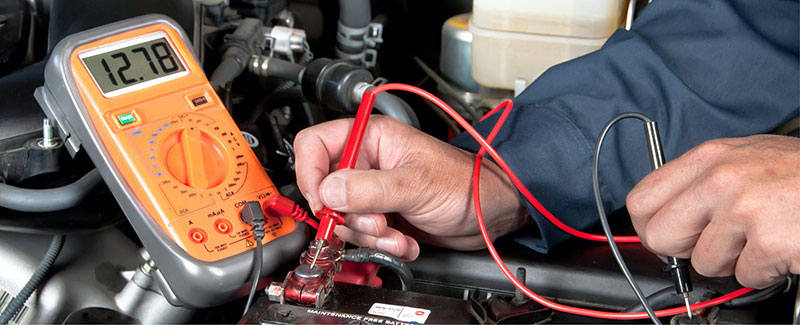
3.8. Driver Interface Components
-
Includes: Dashboard warning lights, chimes, head-up display (in some vehicles).
-
Function: Communicates system status, alerts, and warnings to the driver.
-
Importance: Alerts you in real time so you can react before the system intervenes automatically.
4. How the Active Brake Assist System Works
The Active Brake Assist system is like a silent co-driver—constantly scanning the road, assessing danger, and ready to jump in when milliseconds matter. While it might seem like a magic trick when your car suddenly brakes on its own, the reality is a combination of sophisticated sensors, smart software, and lightning-fast mechanical reactions.
To fully understand how it works, let’s walk through the four major phases of operation, and then look at a real-world example where this system can make all the difference.
Step 1: Monitoring the Road Ahead
From the moment you start driving, the Active Brake Assist system begins working. It uses a front radar sensor—usually mounted behind the grille or emblem—and a camera located behind the windshield to continuously observe what’s happening in front of the vehicle.
These sensors collect data such as:
-
Distance to vehicles or obstacles ahead
-
Speed and direction of those vehicles
-
Presence of pedestrians or cyclists
-
Lane markings and traffic patterns
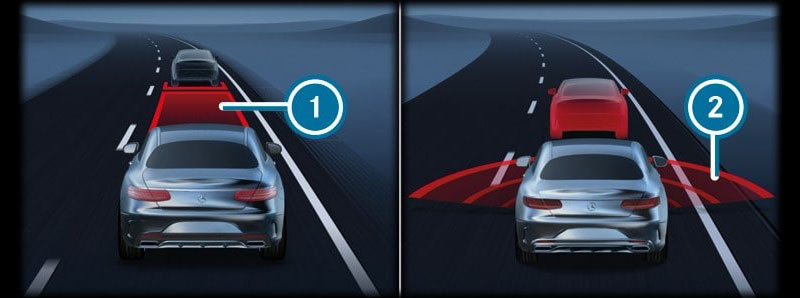
The system processes this data in real time using an onboard control unit (ECU) that calculates the likelihood of a collision.
🛠️ Tech tip: If the radar sensor is dirty or slightly misaligned after a bumper repair, the system may show a warning like “Active Brake Assist Function Limited.”
=> Highly recommended to you: How to fix “Active Brake Assist Function Limited” on your Mercedes
Step 2: Early Warning to the Driver
If the system detects a potential collision, the first response is to warn the driver. This might include:
-
A flashing icon or message on the dashboard (e.g., a red car symbol)
-
An audible alert or chime
-
In some vehicles, a slight pre-charge of the brakes or a quick jolt to grab attention
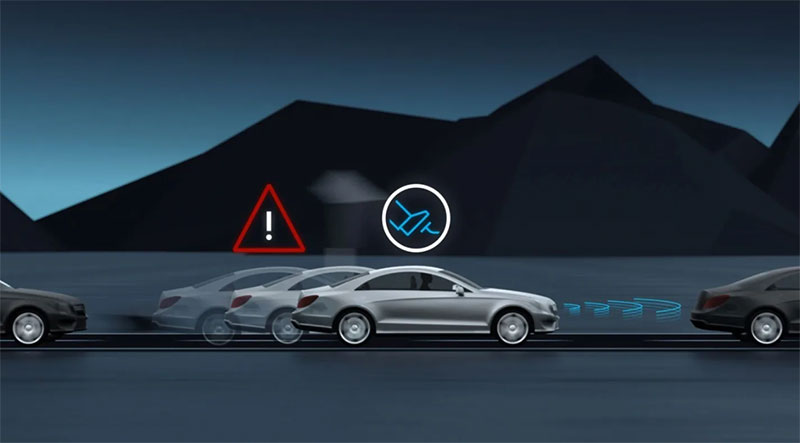
This warning is meant to prompt the driver to take action—either by braking or steering.
🚨 Real scenario: You’re driving 60 km/h in city traffic. The car in front of you suddenly brakes to avoid a cyclist. The Active Brake Assist system instantly detects the slowing vehicle and flashes a red warning icon with a beep—urging you to react now.
Step 3: Brake Readiness (Pre-Fill)
If you don’t react quickly enough, the system prepares the brakes automatically by:
-
Moving the brake pads closer to the discs
-
Increasing hydraulic pressure in the brake lines
This step, known as brake pre-fill, ensures that even the slightest press on the brake pedal results in immediate, full braking power.
It’s like having a foot already hovering over the brake—ready to press down the moment you realize something’s wrong.
Step 4: Automatic Braking
If the threat becomes critical and the driver has not responded at all, the system will step in and apply the brakes automatically.
Depending on how close the obstacle is and how fast you’re going, the system may:
-
Apply partial braking to reduce speed
-
Trigger full emergency braking to avoid or mitigate the impact
✅ On newer Mercedes-Benz models, the system can bring the vehicle to a complete stop from speeds up to 60–70 km/h under optimal conditions.

*Please Note: The system adapts its behavior based on:
-
Vehicle speed
-
Weather conditions (if equipped with sensor fusion)
-
Distance and angle of detected object
-
Driver input (steering, throttle, or soft braking)
This means the response in a traffic jam is very different from what happens on the highway.
4.1. Real-World Case Example: Urban Street Save
Vehicle: 2021 Mercedes-Benz GLC
Location: Downtown intersection
Situation: A distracted driver was looking at GPS directions while rolling forward at 30 km/h. A pedestrian suddenly stepped off the curb.
System Response:
-
The front camera picked up the pedestrian’s movement.
-
Within 0.5 seconds, the radar confirmed a stationary object ahead.
-
The car issued a short audible warning, followed almost instantly by full automatic braking.
-
The car stopped within inches of the pedestrian, avoiding impact.
Outcome: No injury, no crash, and the driver barely had time to react. The system took over when the driver didn’t.
5. Common Issues With Active Brake Assist
The Active Brake Assist system is a brilliant piece of safety technology—but like all advanced systems, it’s not immune to faults. When it malfunctions, the system often disables itself as a protective measure, leaving you with a dashboard warning and reduced safety functionality.
If you’ve ever seen “Active Brake Assist Not Available” or “Brake Assist Function Limited” on your display, you’re not alone. Below are the most common issues, real-world symptoms, and how to recognize and address them.
5.1. Radar Sensor Obstruction or Misalignment
What happens:
The front radar sensor, often located behind the emblem or front grille, is crucial for detecting vehicles or obstacles ahead. If it becomes blocked, dirty, or misaligned, the system may not function correctly.
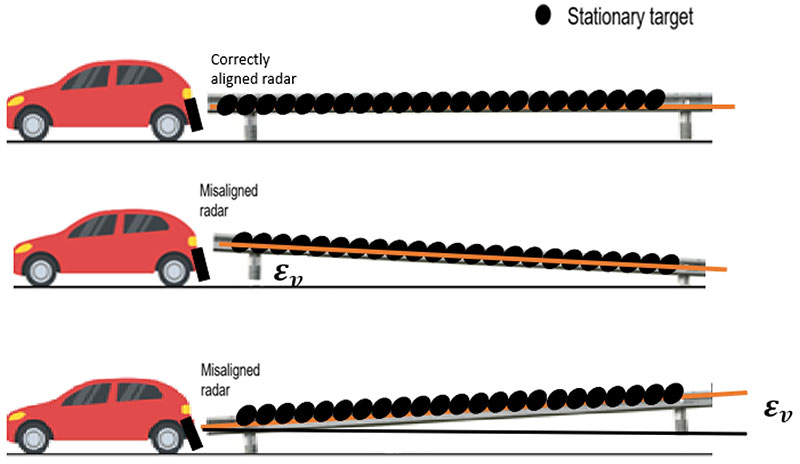
How you can tell:
-
Dashboard message: “Active Brake Assist Function Limited”
-
Audible chime on startup
-
The system doesn’t alert or intervene during obvious situations
-
Driving through heavy rain or after a car wash triggers the warning
-
No visible damage to the bumper, but system is offline
Real experience:
A technician reported a 2020 E-Class where the warning appeared after a minor fender bender. The radar sensor behind the front star emblem was only 2mm off, but the system refused to activate until recalibrated using Xentry.
What to do:
-
Clean the front emblem or grille carefully
-
Check for damage from minor collisions or impacts
-
Professional radar realignment and calibration may be necessary
5.2. Camera Obstruction or Windshield Issues
What happens:
The forward-facing camera, mounted behind the windshield near the rearview mirror, helps recognize vehicles, pedestrians, and lane markings. A dirty, foggy, or cracked windshield in this area can obstruct its view.

How you can tell:
-
Warning light comes on during foggy mornings or heavy rain
-
The system shuts down briefly and comes back after restarting the car
-
Windshield was recently replaced or cracked
-
“Camera sensor malfunction” warning may also appear
Real experience:
After a windshield replacement on a 2019 GLC, the driver noticed the system failed to warn of a car ahead. It turned out the new windshield wasn’t OEM-grade, and the camera angle was off by less than 1°—enough to disable the system.
What to do:
-
Always use OEM windshields for replacements
-
Ensure ADAS camera recalibration is performed after glass replacement
-
Clean the windshield inside and out regularly, especially near the camera zone
5.3. Low Voltage or Weak Battery
What happens:
The Active Brake Assist system is power-sensitive. A low battery or failing alternator can trigger faults, even if everything else is fine.
How you can tell:
-
System warning appears during cold starts or after long parking
-
You also notice other errors (ESP, ABS, parking assist) showing up
-
The warning disappears after a long drive or battery recharge
-
The engine cranks slowly or shows signs of battery weakness
Real experience:
A C-Class showed random “Brake Assist Not Available” messages each morning. The technician found the battery at 11.7 volts, which was enough to cause ADAS errors even though the car still started.
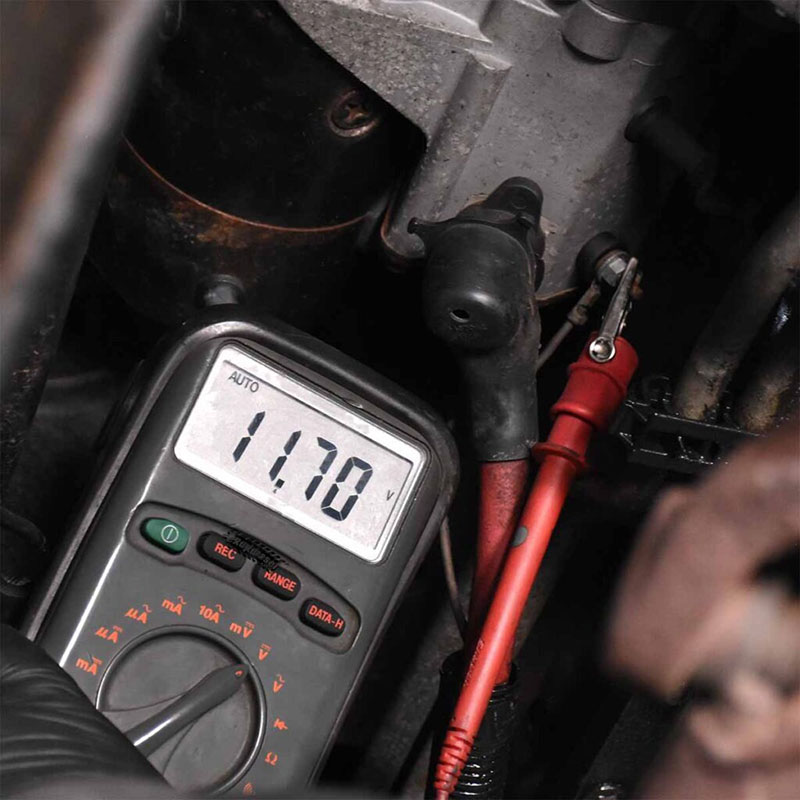
What to do:
-
Test battery voltage (should be 12.5V+ when off, 13.8–14.5V when running)
-
Replace battery if over 3–4 years old
-
Check alternator and charging system
5.4. Faulty Brake Pressure Sensor or Brake Booster
What happens:
The system depends on accurate brake pressure feedback to determine if the driver is braking hard enough—or needs assistance. A fault in the brake booster, brake pedal sensor, or brake pressure sensor can disable the system.
How you can tell:
-
Dashboard warning light
-
Braking feels inconsistent or too soft/hard
-
No automatic braking even when approaching traffic quickly
-
Diagnostic scanner shows codes like C249F (Brake pressure sensor faulty)
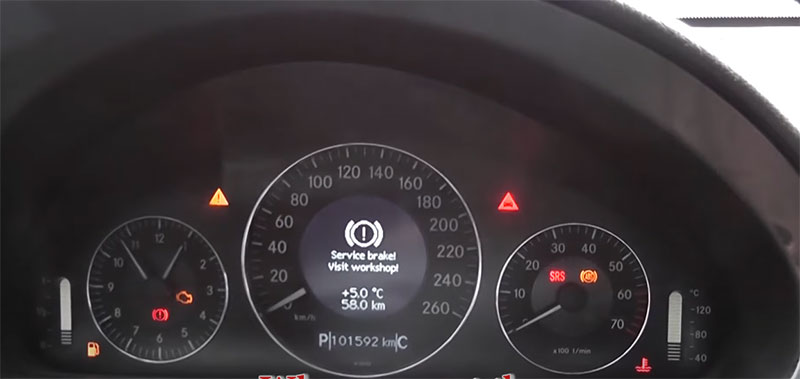
Real experience:
One vehicle’s booster hose had a tiny vacuum leak, and while the brakes worked fine manually, the active system refused to intervene because the pressure feedback was unstable.
What to do:
-
Scan for DTCs using tools like Xentry or Launch
-
Inspect brake booster vacuum lines and connectors
-
Replace faulty sensors or check connectors for corrosion
5.5. Software Glitches or ECU Communication Errors
What happens:
Sometimes the issue isn’t hardware—it’s software. If the control unit software is outdated or there’s a communication glitch between ADAS modules (like ESP, ABS, or camera ECU), the system may stop functioning.
How you can tell:
-
The warning appears randomly while driving
-
No physical damage or sensor issues are found
-
System returns to normal after restarting the car
-
DTCs like U1008 or U140A (communication errors) appear during diagnostics
Real experience:
On a 2022 Mercedes C-Class, the system would disable every few days. After ruling out hardware issues, a software update from the dealer resolved the problem permanently.
What to do:
-
Check for TSBs or firmware updates via OEM platforms
-
Reflash or update the ECU if needed
-
Inspect CAN wiring and module connections if communication faults persist
=> You can contact AutoExplain via WhatsApp +1(936)2896695 for ECU Flashing tutorials & support
6. Repair Tips and Best Practices
✅ DO:
-
Use genuine or OEM-grade replacement sensors.
-
Perform calibration every time a sensor is removed or replaced.
-
Check TSBs (Technical Service Bulletins) for known software fixes.
❌ DON’T:
-
Ignore windshield cracks near the camera zone.
-
Wash the radar area using high-pressure water directly.
-
Assume “no code = no problem.” ADAS systems can fail silently.
7. Real-World Case Study
Vehicle: 2019 Mercedes-Benz C-Class
Complaint: “Active Brake Assist Not Available” message
Diagnosis:
-
Radar sensor slightly off-center due to prior bumper replacement.
-
DTC C1532 stored in ESP module.
Fix: -
Realigned the radar using Xentry calibration tool.
-
Cleared the codes.
-
System passed function test on road.
Lesson: Even a 2–3 mm misalignment can disable the entire system.
Conclusion
The active brake assist system is one of the most advanced and effective safety features in today’s vehicles. It works quietly in the background—until one day, it might just save your life. Understanding how it works, what can go wrong, and how to fix it is crucial for both technicians and vehicle owners alike.
Whether you’re dealing with a warning message, looking to understand the active brake assist function, or need to locate and service the active brake assist sensor, having the right knowledge can make the difference between a costly repair and a quick fix.
If you’re a technician, make it a habit to check for sensor alignment during every service or after a collision. If you’re a car owner seeing warnings like “Active Brake Assist Not Available,” don’t wait—get it diagnosed immediately. Safety shouldn’t be optional.
Need expert guidance or diagnostic software to work on ADAS systems like Active Brake Assist? Visit AutoExplain to access tutorials, tools, and training trusted by professional technicians.

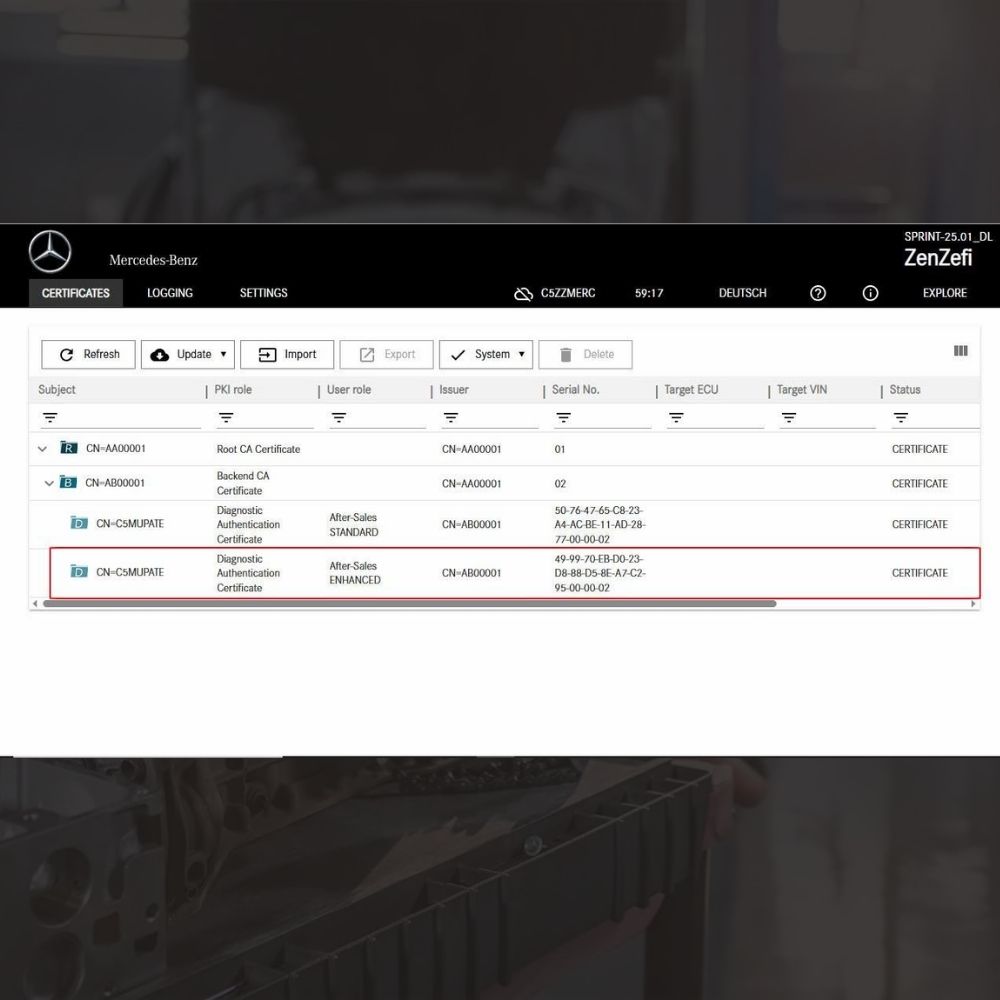
New Mercedes Car Coding Solution with ZenZefi certificate for DTS Monaco 9.02

What is DTS Monaco? Key Functions of DTS Monaco Software
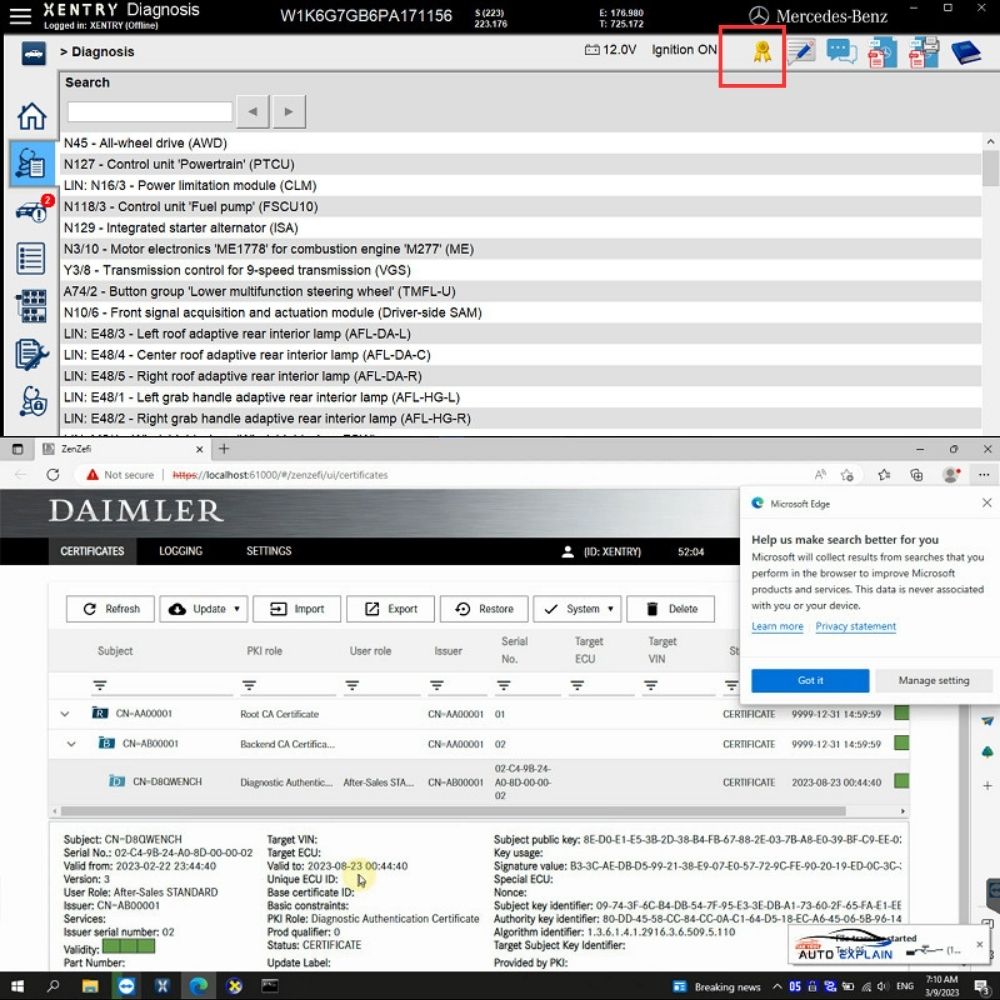
What is the Xentry Certificate Zenzefi? Why You Need It, and When It Is Required?



New Mercedes Car Coding Solution with ZenZefi certificate for DTS Monaco 9.02



